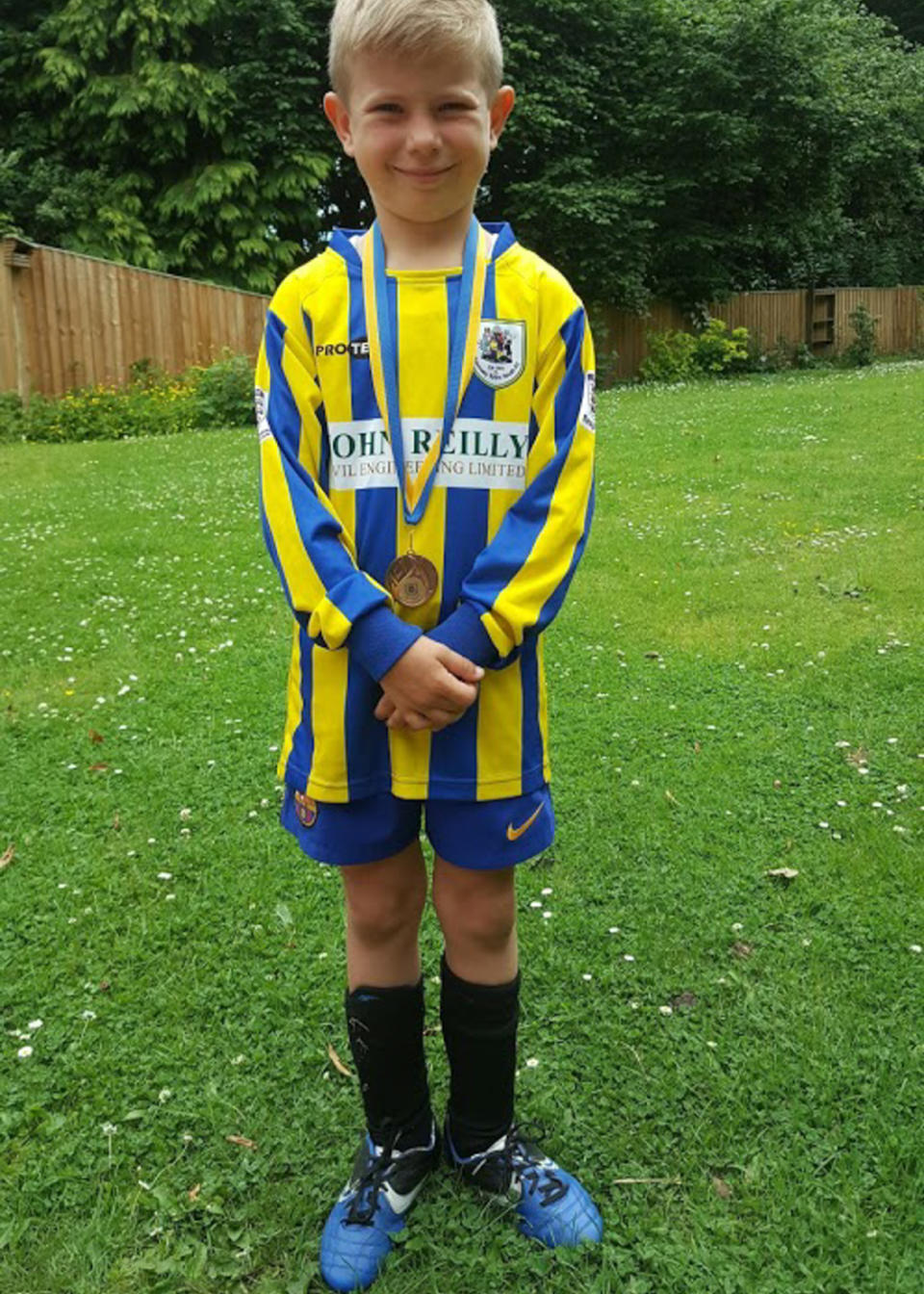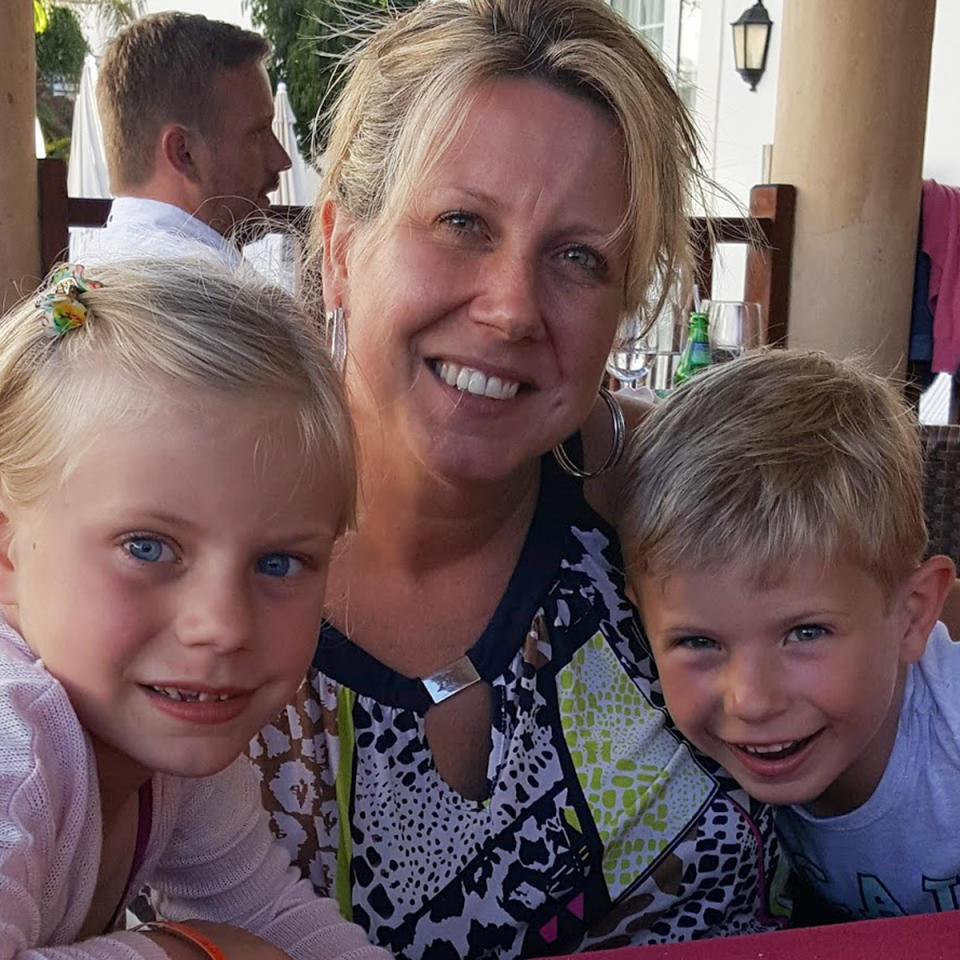Boy's brain disorder 'triggered' by something found in many homes
A family has spent $18,000 (£10,000) in a desperate bid to get a diagnosis for their eight-year-old son who ‘turned into something out of The Exorcist’ after developing a brain disorder ‘triggered by mould’.
Mum Johanne Hewlett, 43, claims her son William transformed into a ‘demon’ and became violent and started hallucinating, even begging his parents to kill him, a week after he was struck down by a fever in September last year.
School matron Johanne and builder husband Jez Hewlett, 53, from Winchester in England, believe the condition lay dormant before the fever and was initially triggered by mould on the walls of the three-bedroom house they used to live in.
The youngster was deemed to be autistic by health professionals and the couple were told to attend parenting classes.
But after a year-long fight William has now been diagnosed with probable PANS/PANDAS – which is caused when an infection triggers a misdirected immune response resulting in brain inflammation.

The condition, which causes neuro-psychiatric conditions such as OCD, tics and eating disorders, can be treated by a two-week course of antibiotics in many cases, according to specialists.
Johanne and Jez are now campaigning to raise awareness of PANS/PANDAS as they believe thousands of children may be misdiagnosed with mental illnesses.
Hallucinations followed by blood dripping down curtains
“A week after he developed a fever on September 12 he woke up and was like a demon,” Johanne said.
“It was like something out of The Exorcist, he just changed overnight.
“He started being really aggressive and violent. He looked different, he looked really pale and his eyes were sunken.
“He was hallucinating saying there was blood dripping down the curtains.
“He would look at us and it was like he didn’t register us. He would say ‘where’s my mum?’ It was horrible. He would ask me to get his mum, I thought ‘he doesn’t know who I am’.
“One of the worst moments was when he sat on my lap and prayed to God for an hour asking God to kill him. He said ‘if God won’t do it, will you do it? Will you ask daddy to do it?’.
“What do you say to that? He’d say ‘push me in front of a bus, send a bus round to kill me’. I was thinking ‘where is he getting this horrible stuff from?’ It was so scary.
“It feels like he’s lost his childhood.

Ms Hewlett said before he had a permanent smile and a great sense of humour.
“He’d give you these big koala bear hugs.
“He’s really bright and clever and you see those bits every now and again. We know he’s still in there. We just want him back and that’s how a lot of parents feel.”
Sparked by a phobia of buttons
The mum of two said William’s behaviour started to change in March of 2017 when he developed a phobia of buttons and stopped wearing them.
What started as a quirk got worse to the point where he would throw up if he saw or thought about buttons and William even became unable to eat food if it had been prepared by someone wearing buttons.
He would also occasionally wet the bed, have trouble sleeping and by July he wasn’t eating properly – refusing food apart from chocolate pillow cereal.
Johanne, who is also mum to Charlotte, 10, said they thought he was being picky or difficult, and then there were periods where he was being completely normal.
“Then he started saying things like ‘Mummy why am I here? I wish I wasn’t alive. I think I’m all confused. My brain isn’t working properly’,” she explained.
“In October we saw his school report and saw some examples of his work and we couldn’t read his handwriting. It didn’t make sense as it had been fine before the summer holiday.
“The words were wrong and the maths was wrong, I realised then it was more than bad behaviour.
“We got an appointment with CAMHS (child and adolescent mental health services) and they suggested he needed an autism assessment.
“The advice was that we needed to go on a parenting course. We did a six-week course which was helpful in showing us how to deal with his anxiety.

Family tried moving house to escape toxins
The dramatic change in William’s behaviour has also had an emotional impact on his sister Charlotte, who struggles to understand why her brother acts the way he does.
“She’s frightened and she gets cross thinking that he’s ruining her life, often she has to sleep at friend’s houses,” Ms Hewlett said.
The mother is convinced her son’s condition was triggered by mould in their home while a fever William developed was the ‘straw that broke the camel’s back’.
The family even fled their house leaving all their possessions behind so that William was no longer exposed to the toxins.
His mum claims William’s test results show a high level of mycotoxins, a toxic substance produced by a fungus, in his system and she believes the PANS/PANDA can’t be treated until they’ve rid her little boy’s body of them.
Johanne hadn’t heard of PANS/PANDA before but after joining some groups on social media she realised William’s symptoms fitted and took him to the doctors demanding antibiotics.
Within 48 hours the family noticed some improvements in William which was enough to get him a referral to a hospital’s immunology department.
After several consultations over 12 months at both private and NHS hospitals William was eventually given a diagnosis of probable PANS/PANDAS.
“We’ve spent thousands of pounds having tests done, microscopy reports to identify the mould and therapies,” Ms Hewlett said. “We’ve seen 12 consultants privately and within the NHS.”
“I would say when you factor it all in – the cost of the diagnosis, the extra clothes we have to buy because of the way he picks holes in his clothes – it’s cost us in excess of £10,000 in a year and we’ve not even had any treatment.”
Johanne claims the treatment suitable for William now is intravenous immunoglobulin (IVIG) but she is unable to get this in the UK so would have to travel to the US and pay tens of thousands of pounds for it.
The key symptoms of PANS/PANDAS
Despite PANS/PANDAS being recognised as a disease by the World Health Organisation Johanne is now working to raise awareness of the little-known condition.
Johanne said she’s unable to say what the future holds and whether William will get better – whether as his immune system develops as he enters adulthood things will change.
Vicky Burford, secretary and trustee at the PANS PANDAS UK charity, said: “Children who have been fine before are being diagnosed with autism and told they have to live with their often life altering symptoms.
“OCD, tics and eating disorders are the three key symptoms and you need two of those to get a diagnosis.
“If these kids present to the GP with these signs and the GP prescribes a two-week course of antibiotics and a referral to a paediatrician for ongoing care then this condition can be cured.
“Unfortunately it is usually seen as a behaviour issue and they’re referred to CAMHS who are underfunded and oversubscribed. There’s often a six-month waiting list and by that time it’s harder to treat PANS/PANDAS.
“The main thing is to get doctors to recognise this condition and treat it with antibiotics.
“Often children with PANS won’t display normal signs of an infection, such as a temperature or sore throat, rather the infection affects the brain instead of the body.”
An NHS England spokeswoman said it is already common practice to treat any infection with the appropriate antibiotics.
“It is also recommended that children and young people are offered treatment for any associated mental health condition, in line with the existing national guidance.”


